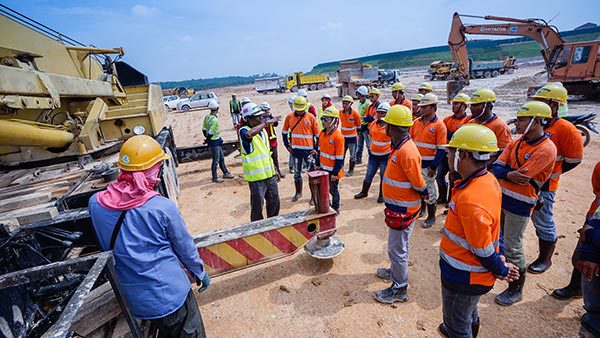In the construction industry, ensuring safety on job sites is paramount, and digital solutions are revolutionizing how safety training is delivered and managed. Online courses have emerged as a powerful tool in enhancing construction safety, providing an accessible, flexible, and comprehensive approach to educating workers about potential hazards and best practices. One of the most significant advantages of online courses is their accessibility. Traditional safety training often requires workers to attend in-person sessions, which can be logistically challenging, especially for those working on remote or multiple sites. Online courses break down these barriers by allowing employees to access training materials from anywhere with an internet connection. This flexibility not only saves time but also ensures that all workers, regardless of their location, can receive consistent and up-to-date safety education. Additionally, online courses offer a wide range of content that can be tailored to specific needs and industry standards. For example, construction safety training can include modules on various topics such as fall protection, electrical safety, and equipment handling.

These courses often feature interactive elements such as videos, quizzes, and simulations, which enhance learning and retention. By incorporating real-life scenarios and virtual simulations, online training programs can provide practical, hands-on experience without the risks associated with live demonstrations. Another benefit of digital solutions is the ability to track and manage training progress. Online platforms often come equipped with sophisticated tracking systems that allow employers to monitor the completion rates and performance of their workforce. This data is invaluable for ensuring compliance with safety regulations and for identifying areas where additional training may be required. Moreover, the ability to generate detailed reports helps in maintaining accurate records, which is crucial for audits and safety inspections and view the page for more info https://natl-safety.com/. Online safety training also supports continuous learning and improvement. Unlike traditional methods, digital platforms can be updated in real-time to reflect the latest safety standards and technological advancements.
This ensures that workers are always informed about the most current safety practices and regulations. Additionally, many online training programs offer ongoing access to resources and materials, allowing workers to revisit and refresh their knowledge as needed. However, it is important to note that while online courses offer numerous benefits, they should complement, rather than replace, hands-on training and real-world experience. Practical exercises and on-site training remain essential for developing the skills and muscle memory needed to handle real-life hazards safely. The most effective safety training programs integrate digital learning with practical, site-specific training to create a comprehensive approach to workplace safety. In conclusion, digital solutions in construction safety training are transforming how workers are educated about job site hazards. Online courses provide a flexible, accessible, and interactive way to deliver crucial safety information, track progress, and ensure compliance with regulations. By combining digital training with practical experience, the construction industry can foster a safer work environment and significantly reduce the risk of accidents and injuries.